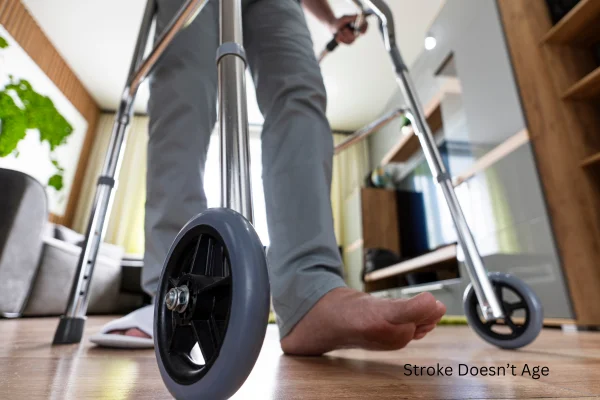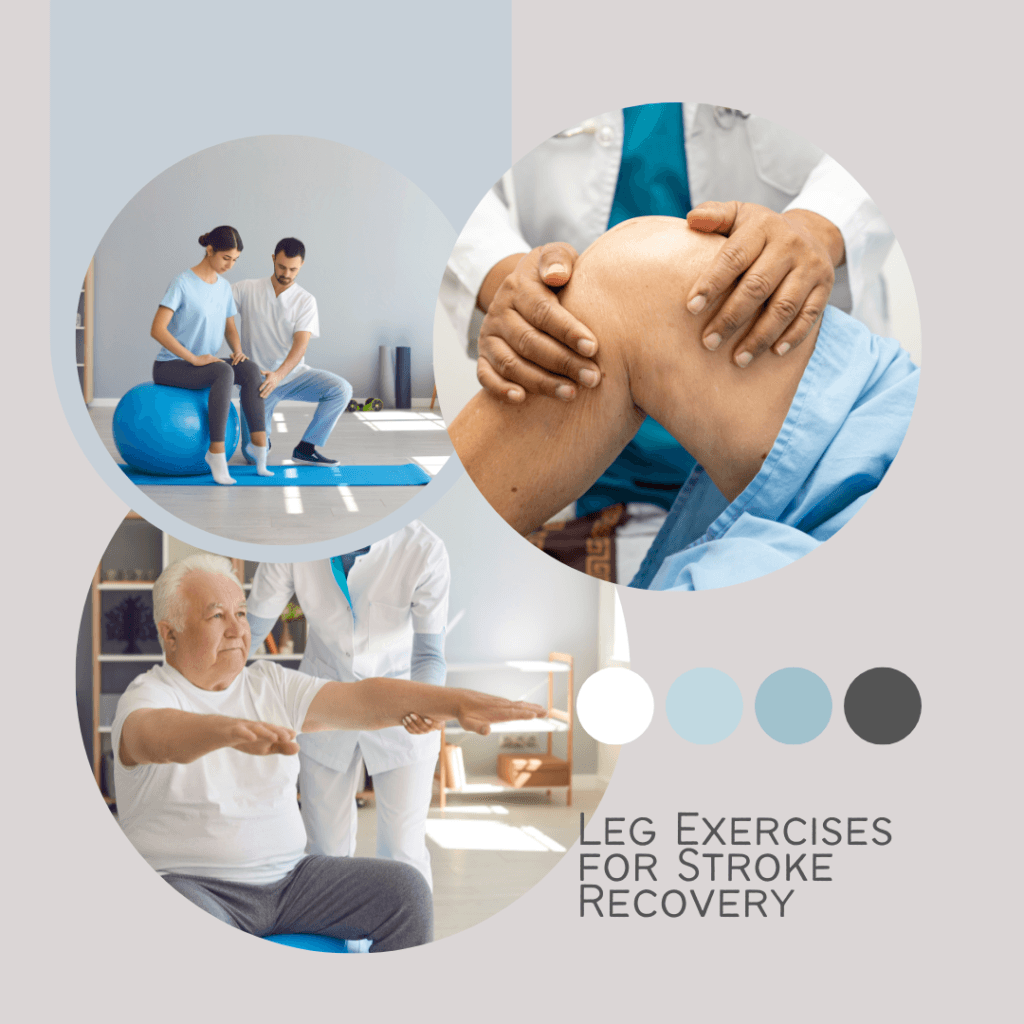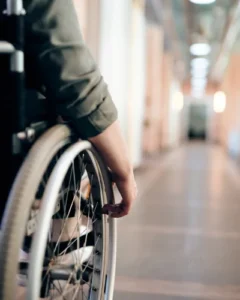Stroke Recovery: How to Walk Again with Confidence

This condition can significantly change daily life, creating a long and challenging path ahead. A key milestone involves regaining mobility and independence. Restoring movement goes beyond physical recovery—it enables individuals to rebuild confidence, reconnect with familiar routines, and engage in everyday activities. This guide explores that journey, offering insights, encouragement, and practical strategies for anyone navigating recovery and for friends or family accompanying them.
Understanding the Impact of Stroke on Mobility
When blood flow to brain is interrupted by a blockage or bleeding, areas controlling movement, balance, and coordination can be damaged. This often leads to weakness, paralysis, or muscle stiffness on one side, a condition known as hemiparesis or hemiplegia.
At first, returning to motion may feel impossible. However, brain has remarkable ability to adapt, forming new pathways through a process called neuroplasticity. With consistent effort and guided practice, many regain movement, even if it appears differently than before.
Why Getting Active Again Matters After a Major Health Setback
Managing everyday tasks on your own plays a major role in staying self-reliant and maintaining a positive mindset. Reclaiming this skill goes beyond physical movement—it restores a sense of freedom, lifts mood, and opens opportunities for a more active and fulfilling lifestyle.
Movement and Physical Activity: Regular activity helps keep heart working efficiently, maintains muscle tone, and promotes smoother coordination. Staying in motion also reduces risk of complications such as blood clots, muscle weakening, and joint stiffness.
Mental Resilience: Spending time outdoors, breathing fresh air, or engaging legs in simple movement can greatly boost mood. These actions encourage release of natural feel-good chemicals in brain, easing anxious thoughts and reducing feelings of isolation. Even brief outings or light pacing indoors can brighten spirits during challenging periods.
Daily Independence: Regaining ability to move around without heavy reliance on others allows participation in everyday activities—preparing meals, completing errands, or visiting friends and family—with greater ease and autonomy. It’s about reclaiming routines and feeling more in control of life again.
Confidence and Drive: Every small progress counts. Standing a little longer, shifting weight from one side to another, or covering short distances with guidance can strengthen self-belief. Achieving new milestones, no matter how modest, builds hope and demonstrates that improvement is possible. Each success lifts spirits and fuels determination, even when recovery feels uncertain.
Path to Moving Independently: What to Expect
Regaining walking ability and everyday movement after an event like this demands patience, as each person’s journey is different. Rate and level of progress depend on factors such as condition severity, which regions of brain were affected, and overall physical condition. Below is a general overview of how recovery may progress:
1. Early Stages: Assessment and Stabilization
In the immediate aftermath of a stroke, focus centers on stabilizing medical condition and preventing additional damage.
Physical therapists evaluate mobility, strength, and balance to develop a personalized rehabilitation plan.
During this phase, survivors may need assistive devices like wheelchairs or walkers to move around safely.
2. Rehabilitation: Relearning Movement
Rehabilitation represents an initial step toward restoring movement and independence. It often involves physical therapy, occupational therapy, and, in some cases, speech exercises, depending on individual needs.
Therapists guide through exercises designed to improve strength, flexibility, and coordination. These can range from seated routines to standing practice and walking training.
Consistency is essential. Repeated practice allows brain to form new pathways, helping recover functions that were affected and supporting gradual progress over time.
3. Progress and Plateaus
Progress doesn’t always follow a steady rhythm. Some moments bring sudden breakthroughs and noticeable changes, while others feel stagnant, as if nothing is shifting at all.
Periods when progress feels slow are very common, and they do not indicate that recovery has stopped. Often, these pauses reflect brain taking time to adjust and strengthen newly learned skills. During these moments, internal reorganization occurs, allowing emerging abilities to settle and become more reliable before the next step forward happens.
4. Long-Term Recovery: Adapting and Thriving
For many, life may never return exactly to previous levels of movement and independence. Yet by adopting personalized strategies and using assistive tools such as canes or walkers, individuals can stay active and involved in daily routines. These adaptations make it possible to enjoy hobbies, participate in regular activities, and preserve a sense of freedom and purpose. With patience, consistent effort, and a positive mindset, a fulfilling and meaningful life is achievable—just in a different form than before.
Consistent movement paired with guided therapy sessions plays a big role in keeping mobility steady and, in many cases, even boosting it further. When these practices are carried out regularly, they not only support strength but also encourage flexibility, coordination, and long-term independence.

Tips for Getting Back on Your Feet After a Stroke:
If you or a loved one is working toward regaining mobility, here are some practical tips to support the journey:
1. Start Small and Celebrate Progress
It begins with tiny motions. Appreciate each little motion, whether it’s pausing to stand, taking a single stride, or covering a few feet. Every bit makes a difference.
Progress may feel slower than expected, but every effort counts. Each attempt, no matter how small, contributes to gradual improvement. What seems like a tiny step today can lead to larger gains over time. Keep going, and acknowledge each moment of commitment and determination.
2. Work with a Physical Therapist
A physical therapist is essential for guiding someone back to strong, confident movement. They design personalized routines tailored to current abilities and long-term goals, ensuring every action is safe, purposeful, and effective. Their approach often combines gradual conditioning, targeted stretches, and exercises that restore balance, coordination, and flexibility, all while maintaining steady, manageable progress.
Don’t hesitate to ask questions or share concerns with your therapist. They’re there to support you.
3. Use Assistive Devices
Using devices such as canes, walkers, or braces can transform independent movement. These items do more than provide assistance—they improve balance, reduce risk of falls, and make motion feel steadier and more confident. Rather than seeing them as limitations, they can be viewed as tools that restore stability. They allow walking with less effort, make regaining footing easier, and build trust in one’s own strength while moving forward.
Don’t see these tools as a weakness. They’re gateways to more freedom and self-reliance.
4. Practice Balance and Strength Training
Keeping your legs strong and stable is important. You can practice balancing on one foot, raising your heels, or doing seated leg lifts to boost strength and control.
Practicing yoga or tai chi can greatly improve coordination, allowing movements to flow more smoothly and gracefully. These activities gently stretch muscles and joints, increasing flexibility and range of motion. With repeated practice, awareness of motion grows, improving balance and control. Over time, even challenging sequences become easier, and ease in movement carries into daily activities. Mindful focus in these disciplines also encourages proper posture and alignment, reduces stiffness, and promotes a more agile, fluid way of moving.
5. Stay Consistent
Growth comes with patience and consistent effort. Make it a point to do your exercises regularly, even if it’s just for a few minutes at a stretch.
Consistency is more important than intensity. Small, regular efforts yield long-term results.
6. Listen to Your Body
Pay attention to your body’s signals. If you feel pain or exhaustion, take a break.
Pushing too hard can lead to injury or burnout, so pace yourself.
7. Stay Positive and Patient
At times, a path forward may feel full of twists and hurdles, testing patience and inner strength. Maintaining optimism can make challenges easier to face. Surround yourself with people who encourage and uplift—those who listen, offer motivation, and remind you of progress, even when moments feel difficult. Their presence can provide a push to navigate obstacles and stay focused on what lies ahead.
Every small victory counts. Even tiny steps forward reflect real progress, no matter how slow they appear. Each effort makes an impact, and recognizing these moments is worth celebrating.
Overcoming Challenges in Walking After a Stroke
Recovering movement after such an event can be tough. Here are some common obstacles and approaches to work through them effectively.
Muscle Weakness
When one side isn’t moving like it once did, simple movements such as rising to a stand or shifting weight can feel challenging. Incorporating exercises like resistance bands or seated leg presses under supervision can gradually rebuild muscle strength and improve stability while standing or adjusting positions.
Spasticity
Muscle stiffness, also known as spasticity, can make moving around or completing simple activities a real challenge. Loosening tight areas can be achieved through gentle stretching, hands-on approaches such as massage, and prescribed therapies from a medical professional, all working together to enhance flexibility and ease of movement.
Balance Issues
Struggling to keep balance can increase the risk of slips or falls. To strengthen your footing, try activities that focus on stability in a secure environment—like using a solid surface for support or having someone close by. Introducing tools such as a cane or walker can provide additional security while moving around.
Fatigue
Feeling drained is a common part of recovery after an event like this. It’s important to allow time for rest—avoid pushing too hard. Focus on nourishing meals that provide energy, and break daily tasks into smaller, manageable steps. This approach makes it possible to stay active throughout day without overexertion.
Fear of Falling
Fearing a fall can keep you from exploring new movements. Begin in a secure area with someone skilled nearby, like a trainer or a family member. As your balance strengthens and coordination sharpens, your trust in what you can do will slowly build. Each careful attempt reduces worry and encourages greater independence over time.
How Technology Supports Movement Recovery
Modern innovations are creating new possibilities for individuals recovering mobility after a major medical event. These advanced tools focus on restoring abilities, improving function, and fostering independence. Here are some of the latest resources supporting people as they relearn movement and rebuild autonomy:
1. Robotic Exoskeletons
These wearable devices provide practical assistance during practice, helping individuals retrain legs and feet for better timing and smoother coordination. By guiding each movement, equipment encourages more natural patterns and supports steady progress with every effort.
2. Virtual Reality (VR)
VR systems craft fully interactive spaces that immerse users in realistic scenarios, allowing them to practice common activities within a secure, controlled environment. These digital worlds are engaging and enjoyable, promoting regular participation while easing frustration or monotony. By simulating everyday tasks—such as climbing stairs, moving through crowded spaces, or grabbing objects—they provide a novel way to regain essential abilities with greater variety and lower stress.
3. Functional Electrical Stimulation (FES)
FES devices send precise electrical signals to particular muscle groups, reawakening areas that have grown inactive or weak. This technology promotes proper muscle activation, making routine movements smoother and improving overall control of motion.
4. Mobile Apps
Apps designed for individuals recovering from a major neurological event can be highly useful. They often provide guided routines for different ability levels, allowing users to practice structured activities from home. Many include tracking tools to monitor improvements—such as standing longer, moving with greater stability, or completing specific exercises. Built-in prompts and motivational cues encourage regular practice and help maintain consistency throughout recovery.

Emotional Journey of Regaining Movement
Recovering independent movement isn’t just a physical process—it also brings strong emotions. Frustration, anger, or sadness often appear when facing new limitations. Friends and family may feel uncertain or unsure how to respond and adjust to these changes.
Here are some strategies for navigating emotional challenges during recovery:
Acknowledge Your Feelings: It’s okay to feel upset or discouraged. Allow yourself to process these emotions without judgment.
Reach Out to Others: Find Connection in Shared Experiences
Consider joining a local group or online community made up of people who’ve been through something similar. Talking to folks who truly “get it” can bring a real sense of comfort. Whether you’re chatting over coffee or messaging online, these conversations often bring a kind of relief that’s hard to find elsewhere. It’s not just about telling your story—it’s about hearing theirs too. That mutual understanding can remind you that you’re not alone, even on the toughest days.Focus on What’s Possible: Rather than lingering on what’s missing, acknowledge the progress you’ve made. Each move ahead reflects your strength and perseverance.
Be Kind to Yourself: This process isn’t easy, and it’s okay to have tough days. Remind yourself that you’re doing your best.
Inspiring Stories of Moving Forward After Recovery
Hearing about others’ successes can be a powerful source of motivation. Here are a few inspiring stories:
John’s Journey
After a major medical event left him unable to move independently, John made a promise to himself—he would not give up. He committed to daily routines designed by specialists to improve strength, coordination, and mobility. With family encouraging him at every step, he gradually discovered new ways to manage everyday tasks. Today, John uses a cane for stability and even enjoys nature outings with his grandchildren, an activity that once felt impossible.
Maria’s Determination
Maria refused to let a diagnosis define her life. Through grit and unwavering commitment, she progressed from relying on a wheelchair to moving independently. Her journey included setbacks and challenges, but she remained consistent, determined to reclaim daily routines. Now, she shares her experience at a local rehabilitation center, offering real-life insight, encouragement, and inspiration to others facing similar obstacles.
David’s Innovation
David took a forward-thinking approach to regaining strength. Alongside traditional rehabilitation, he incorporated advanced technology—a robotic exoskeleton designed to guide leg coordination. The device gently directed movements, allowing muscles and nerves to practice natural patterns until they became instinctive. What stood out most was his dedication: session after session, he showed focus and persistence. His medical team was impressed with rapid progress. Today, David moves independently with minimal assistance, achieving a milestone many thought would take far longer.
These stories demonstrate that progress is possible, even when challenges feel overwhelming. Consistent effort, creative strategies, and determination can lead to meaningful gains and renewed independence.
Can this type of physical activity help improve cognitive function after a stroke?
Absolutely. Staying active through regular movement can work wonders for mental sharpness, especially after experiencing something significant. When you keep moving—whether through light chores or structured exercises—it boosts circulation to the brain. That increased flow supports clearer thinking, enhances focus, and strengthens memory.
On top of that, staying involved in routine activities keeps neural pathways active and responsive. It’s like giving your brain gentle cues to keep adapting, learning, and staying alert. Small actions—like stretching, moving between rooms with intention, or rising from a chair independently—can all support a sharp and engaged mind.
So yes, making regular activity part of your day—no matter how small—can benefit both your thinking and how you feel emotionally. It’s a full-body reminder that you’re still pushing forward.
How long does it typically take to walk again after this type of event?
Journey toward standing and moving independently differs for each person. Several factors affect how quickly progress occurs, including severity of the initial incident, regions of brain involved, and overall physical condition. Some notice improvements within a few weeks, while others may require months—or longer—to regain control and stability. What ultimately influences outcomes is consistent effort during rehabilitation and maintaining an optimistic, determined mindset through ups and downs.
Final Thoughts: Walking Toward a Brighter Future
Restoring independent movement requires patience, persistence, and motivation. Progress can be challenging, but every small achievement matters. Whether navigating this personally or supporting someone, no one faces it alone. With consistent practice, determination, and a positive mindset, self-reliance can be regained.
As you move through this chapter, keep hope close. Every small move, however tiny, brings you nearer to a brighter, more self-reliant future. Keep pushing ahead, steadily and surely.



